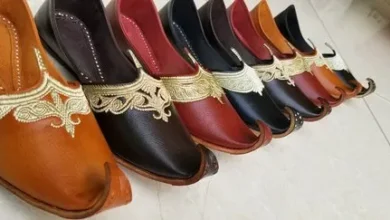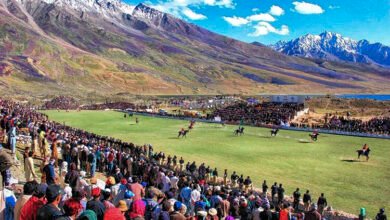
Introduction
The Chitrali Topi, a distinctive and iconic headpiece from the mountainous regions of Khyber Pakhtunkhwa (KP), is more than just a piece of clothing—it’s a symbol of the rich cultural heritage and identity of the Chitral Valley. Worn by both men and women, this unique cap is not only known for its traditional design but also for its significance in representing the culture of the people from Chitral and its surrounding areas.
The Design and Craftsmanship of the Chitrali Topi
The Chitrali Topi is traditionally made of wool, felt, or cotton and features a unique, conical shape that stands tall on the head. It is often decorated with intricate stitching, creating a distinctive, circular, and spiraled pattern around the crown. The cap’s folded sides and the central part of the hat give it a regal appearance, making it instantly recognizable.
The Chitrali Topi is usually grey, white, or brown, colors that are often seen in natural fibers, and sometimes, it may feature additional embroidery or decorations to add personal flair. Handmade by local artisans, this topi showcases the region’s rich tradition of craftsmanship, passed down through generations.
Cultural Significance
The Chitrali Topi is much more than just a fashion accessory. It is a symbol of pride, honor, and identity for the people of Chitral. It represents a connection to the region’s history and heritage. Wearing the Chitrali Topi is an expression of the individual’s roots, their belonging to the Chitral community, and a mark of respect for the region’s traditions.
This headpiece is often worn during social, cultural, and religious events, and it holds particular significance during weddings, cultural festivals, and celebrations. It is a reminder of the unique way of life and values upheld by the people of Chitral, known for their hospitality, warmth, and deep-rooted traditions.
Chitrali Topi in Modern Fashion
While the Chitrali Topi remains an essential part of traditional attire, it has also found its place in modern fashion. Many young individuals from Chitral and other regions now wear the topi as part of their daily attire, making it a stylish and fashionable accessory. Its timeless appeal has led to its adoption in mainstream Pakistani fashion, where it is sometimes paired with casual and formal outfits, blending tradition with contemporary style.
The Chitrali Topi has also garnered attention from tourists and fashion enthusiasts worldwide, adding to the growing global appreciation for traditional Pakistani attire.
Conclusion
The Chitrali Topi is not just a hat; it is a cultural treasure that reflects the rich history, traditions, and identity of the people of Chitral. From its distinct design and craftsmanship to its symbolic meaning, this headpiece continues to play a vital role in preserving the region’s heritage. Whether worn during important events or as part of daily life, the Chitrali Topi remains a timeless emblem of pride, culture, and unity.



